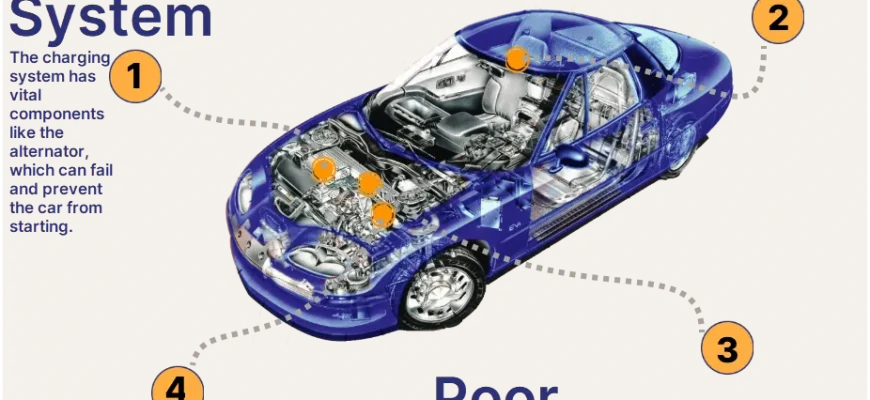A malfunctioning starter motor can leave you stranded, so recognizing the symptoms early is crucial. This article outlines common signs of a failing starter and simple diagnostic steps you can perform yourself before calling a mechanic.
Common Symptoms of a Failing Starter
- Slow Cranking: The engine cranks slowly, struggling to turn over. This often indicates a weak starter motor or low battery voltage.
- Clicking Noise: A rapid clicking sound when you turn the key suggests the starter solenoid isn’t engaging properly. This might be due to a low battery, a faulty solenoid, or worn starter motor components.
- Grinding Noise: A grinding noise during cranking points to the starter gear teeth not meshing correctly with the engine’s flywheel. This can damage both components if ignored.
- No Cranking at All: Complete failure to crank, with no sound at all, points to a completely dead battery, a blown fuse, a faulty ignition switch, or a failed starter motor.
- Intermittent Starting: The starter works sometimes but fails at other times, indicating a problem with the starter motor’s internal components or its electrical connections.
DIY Diagnostics and Checks
Before assuming the starter is the culprit, perform these basic checks:
1. Battery Voltage Check:
Use a multimeter to check the battery’s voltage. A reading below 12.6V indicates a weak battery, which can mimic starter problems. A fully charged battery should be around 12.6-13;2V.
2. Battery Cable Inspection:
Inspect the battery cables for corrosion, loose connections, or damage. Clean corroded terminals with a wire brush and tighten loose connections.
3. Starter Solenoid Check (Clicking Noise):
If you hear a clicking sound, try tapping the starter solenoid gently with a wrench or hammer (while the key is off). A temporary fix might indicate a faulty solenoid. Caution: Be extremely careful and disconnect the battery’s negative terminal before attempting this.
4. Listen Carefully:
Pay close attention to the sounds the starter makes. The specific noise (grinding, clicking, slow cranking) will narrow down the potential problem.
When to Call a Professional
If you’ve performed these checks and still suspect a faulty starter, it’s best to consult a qualified mechanic. Replacing a starter motor usually requires specialized tools and knowledge. Ignoring a faulty starter can lead to further engine damage.
Remember, safety is paramount. If you’re uncomfortable working on your vehicle’s electrical system, always seek professional assistance.










Clear, well-written, and informative. The explanations of the different sounds a failing starter can make are very useful for pinpointing the problem.
This article is a valuable resource for anyone who wants to learn more about car maintenance. The information is presented in a clear and accessible manner.
A very practical and helpful article. The step-by-step instructions make it easy to understand the process of diagnosing a faulty starter motor.
This is a great, concise guide for identifying starter motor issues. The simple diagnostic steps are easy to follow, even for someone with limited mechanical knowledge.
I appreciate the safety warnings included, especially regarding working with the battery and starter solenoid. This is crucial information for DIY car repairs.
Excellent article! The inclusion of the DIY diagnostics is particularly helpful. It empowers readers to troubleshoot before seeking professional help, saving time and potentially money.